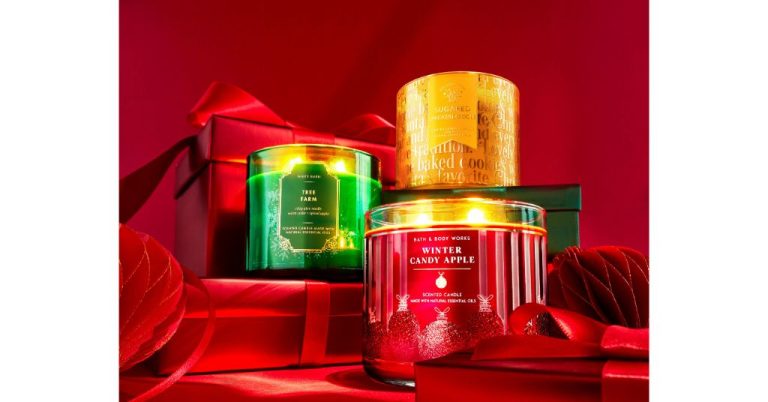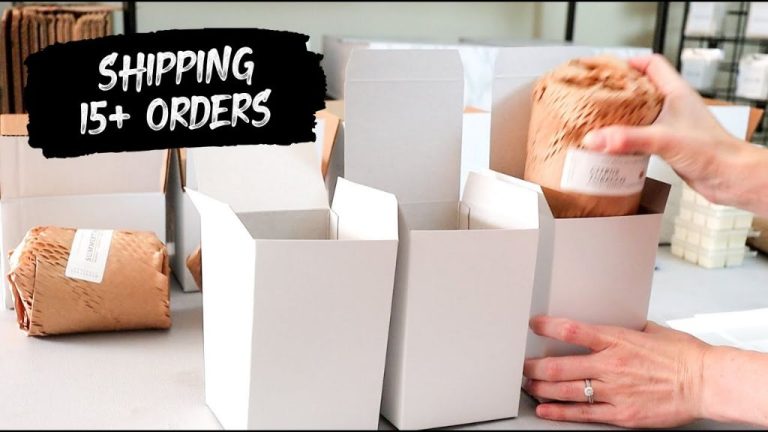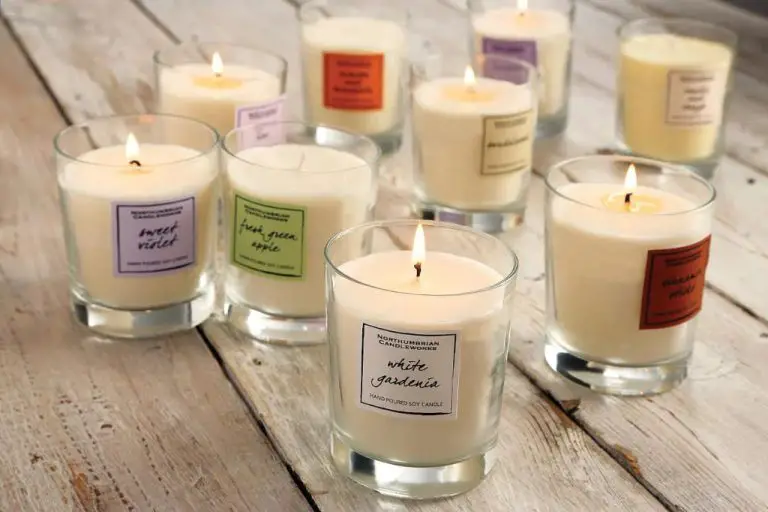What Labels Should Be On Wax Melts?
Wax melts, also known as wax tarts, are blocks of soft wax infused with fragrance oils. They are designed to melt in a wax warmer, releasing the pleasant aroma into the air. When placed in an electric or candle wax warmer, the heat causes the wax melt to gently liquify and emanate its scent. The aroma fills the room and can make your home smell lovely.
Unlike candles, wax melts do not have a wick that is burned and soot is not produced. The wax just melts and evaporates. This makes wax melts a popular option for fragrance for those who prefer not to have the smoke, soot, and fire risk that comes with burning candles. Wax melts are designed to subtly deliver an ambient scent throughout the room.
Wax melts come in a vast array of fragrances like floral, fruity, bakery, herbal – whatever your preference is. They can help set the mood, energize or relax you, or simply make your home welcoming. Wax melts are a versatile way to keep your home smelling fresh.
Ingredient List
Wax melts are typically made from a combination of wax, oils, and fragrance. Common ingredients include:
- Paraffin wax – This is the most common base wax used in commercially made wax melts. Paraffin is derived from petroleum and provides a cost-effective wax with a high melting point. However, some avoid paraffin due to potential health concerns (DIY All-natural Wax Melts {To Use in Wax Warmers}).
- Soy wax – A natural alternative to paraffin, soy wax is made from soybeans. It’s biodegradable and renewable (How to Make Wax Melts: Everything You Need to Know).
- Beeswax – Derived from honeycombs, beeswax provides a natural wax option. It has a lovely honey aroma, but can be more expensive.
- Coconut oil – Added to the wax base, coconut oil helps the wax melt at a lower temperature. It also gives the wax melts a smooth, creamy texture.
- Essential oils – These natural plant oils provide fragrance for wax melts. Popular scents include lavender, lemon, eucalyptus, peppermint, etc.
- Fragrance oils – Synthetic fragrance oils are commonly used to scent commercial wax melts. They offer consistent, strong aromas.
- Dyes – Small amounts of liquid or block dyes color the wax. Common dyes are made from pigments, lakes, or micas.
The specific ingredients and amounts vary between recipes, but most wax melts contain a wax base,fragrance, and possibly dyes or oils.
Allergen Warnings
Soy wax melts typically contain soybean oil or soy wax, which can cause allergic reactions in people sensitive to soy. Symptoms may include skin rashes, nasal congestion, coughing, sneezing, and watery eyes. 1
Other common allergens found in wax melts are essential oils like lavender, eucalyptus, lemon, and peppermint oils. These can trigger reactions in people allergic to the plant source. 2
It’s important for manufacturers to clearly label any potential allergens in wax melts so sensitive individuals can avoid them.
Weight
Wax melts are typically sold in clamshell containers that hold 6 cubes of wax, with each cube weighing approximately 1 ounce or 28 grams. So a standard 6-pack of wax melts contains a total weight of around 6 ounces or 168 grams of wax (Reference: Handmade in Florida, Candle Science). Knowing the total weight helps consumers understand how much wax they are getting and compare between products.
Scent Description
The scent of a wax melt is one of the most important factors for consumers when purchasing. A detailed and evocative description of the fragrance helps customers know what to expect when melting the wax. When naming and describing scents, aim to capture the essence of the fragrance in a way that conjures up imagery and emotions.
For example, describe floral notes like lavender or rose, fruity notes like apple or citrus, spicy notes like cinnamon, or seasonal scents like pine or pumpkin spice. Mention complementary fragrance notes that blend together into a harmonious scent. Use descriptive words like “bright,” “fresh,” “crisp,” “warm,” “rich,” or “luxurious.” Suggest when or where someone might want to burn the wax melt, such as “an afternoon refresh” or “cozy evening in.”
The scent description sets expectations for customers. Be realistic about the intensity and longevity of the fragrance. Is it mild or strong? Will it fill a room or just provide a subtle scent? How long can customers expect the wax melt to last? Providing this context helps prevent disappointment and improves the customer experience.
Usage Instructions
Wax melts should always be used safely to avoid injury or damage. Here are some tips for safe usage:

Use an electric wax melter designed specifically for wax melts. Do not use candles, stovetops, or other heat sources not intended for wax melting (Source 1). Place the melter on a flat, stable surface away from flammable materials.
Never leave a wax melter unattended while plugged in. Melters can reach high temperatures and should always be monitored (Source 3). Unplug the melter when not in use.
Keep both new and used wax melts out of reach of children and pets. Supervise children around wax melters. Do not ingest wax (Source 2).
Allow wax melts to fully pool in the melter dish before blowing out fragrance. Never tilt or handle a melter that contains hot liquid wax to avoid spills and burns.
Never touch wax with bare hands, as it can be extremely hot. Use tongs or another utensil to add and remove wax. Handle with care.
Properly clean and maintain your wax melter to prevent buildup. Follow all manufacturer instructions.
Expiration Date
Wax melts generally have a long shelf life and can last for over 12 months if stored properly. The scent and quality of unused wax melts will remain intact during this time. According to Nuscents Co (https://nuscents.co.uk/blogs/news/how-to-store-wax-melts), wax melts typically have a shelf life of around two years. The shelf life can be extended by storing wax melts in a cool, dry place away from direct sunlight and heat. Properly stored wax melts will maintain their scent throw and performance even years after production.
Over time, the fragrance oils in wax melts can lose their potency and the scent throw may weaken past the 2-year mark. But many users find that wax melts older than 2 years may actually have a stronger scent throw as the wax fully cures over an extended period, as noted by Devonwick (https://devonwick.com/blogs/news/how-long-do-wax-melts-last). So wax melts can often perform well beyond their official expiration date if stored properly.
Company Information
When purchasing wax melts, it can be helpful to know some background information about the company that makes them. This allows you to learn more about their values, manufacturing processes, and customer service options in case any issues arise.
Reputable wax melt companies will provide their contact information right on the product label or packaging. This usually includes a website, phone number, email address, and physical address. Having this information readily available makes it easy for customers to get in touch if needed.
On their website, quality wax melt brands often share details about their origins, owners, ingredient sourcing, and manufacturing standards. They may explain their commitment to ethical production, use of natural ingredients, or environmentally-friendly practices. Photos of their production facilities and team members can add an extra level of transparency.
Before buying any wax melt product, take a close look at the company information provided. This will give you insight into their business philosophy and production methods. Knowing who makes the wax melts and how to contact them directly can give added reassurance about the quality and safety of their products.
Safety Warnings
Some key safety warnings to include on wax melt labels:1
- Do NOT leave melter unattended while in use.
- Keep out of reach of children and pets.
- Do not ingest wax melts.
- Do not place on or near any heat sources such as stovetops, ovens, fireplaces or radiators.
- Always ensure wax melter is on a stable, level, heat resistant surface away from flammable objects.
- Discontinue use if dish contains less than 1/2 inch of melted wax. Only melt wax to depth of dish.
- Do not touch melted wax as it may cause burns.
- Always handle melter dish carefully as contents may be hot.
It’s important that safety warnings are clear and comprehensive on wax melt labels. Following proper safety precautions can help prevent injuries or accidents when using wax melts and melters.2
Recycling
Properly disposing of wax melts is important for safety and environmental reasons. Here are some tips on recycling wax melts:
If the wax still has scent, consider reusing it in your warmer until the fragrance fades. Gently place the melted wax back in the warmer so it re-solidifies and can be reused. According to this source, wax melts are reusable until the scent is gone.
Once the wax no longer has fragrance, melt it down and add it to homemade candles or tarts. Refill old candle jars or melt and pour wax containers with the scentless wax. See this article for creative ways to reuse wax.
If reusing the wax is not an option, check if your local recycling center accepts candles and wax melts. If so, make sure all packaging and labels are removed before recycling.
As a last resort, you can throw spent wax melts in the regular trash. Allow them to fully harden first. Never pour hot melted wax down drains as it can clog pipes.




